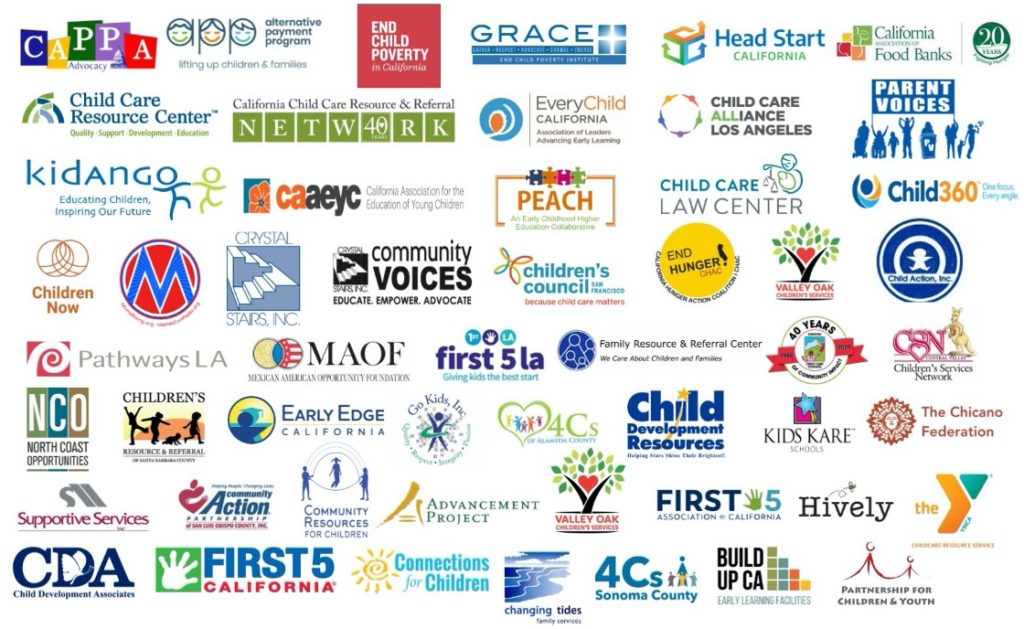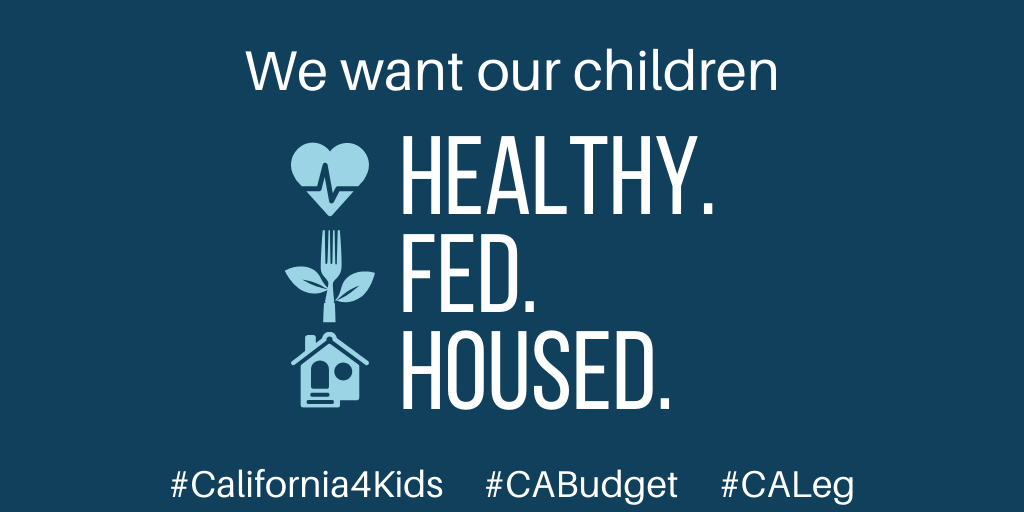Child Care & End Child Poverty Joint Advocacy Day for June Budget
Share this page:

Child Care & End Child Poverty Virtual Advocacy Day
June 4, 2020
For event registration and schedule of events, click here.
Due to the devastation of COVID-19, California’s economy has been pummeled into a recession deeper than we have seen since the Great Depression. Our robust pre-COVID economy still didn’t make it possible for California’s families to make ends meet, especially families of color. The current pandemic has put a spotlight on the inequities in our current economic structures that disproportionately impact women, communities of color, the unhoused and elderly.
In crisis, we also have opportunity.
As FDR crafted the New Deal, he knew that the nation needed more than response, more than recovery. He called for the reform of systems that were meant to take care of all of us. In this moment, we have the opportunity to create a path to recovery that reforms systems and builds a more inclusive economy. We envision a post-pandemic California that prioritizes the economic stability of California families: Black and Brown, documented and undocumented, who continue to be the backbone of Califnorna’s economic success. We do this together by building strong and supported early care and education programs, ensuring food and housing security for families, and providing access to the funds parents and caregivers need to care for their families.
We know the coronavirus crisis’ health and economic effects are devastating–California’s unemployment rate is projected by the Department of Finance to reach 24 percent–and the challenges ahead are formidable.

THE CRITICAL NEED
Prior to COVID-19, California–the fifth largest economy in the world–had the highest poverty rate with almost 2 million children living in poverty and 450 thousand in extreme poverty.
According to the California Budget and Policy Center, communities of color face much higher child poverty rates and less access to resources. The child poverty rates are 31% for Latinx children, 28% for Black children, 18% for other children of color, and 12% for White children.
Among the one in five Americans who have lost jobs during the pandemic, researchers have found that those hit the hardest financially were the least educated and lowest paid, further exacerbating the impact on children and families of color.
A shocking 31 percent of Californians report food insecurity, approximately 12 million people–nearly triple the pre-COVID level. Rates are even higher for households with children, and higher still for families of color. With the summer upon us, when hunger among K-12 students increases, many children are at risk of not having a single nutritious meal in a day.
Prior to COVID-19, only one in nine qualified children had a voucher to access a family child care home or center. With the addition of prioritizing the needs of income-eligible essential workers on the front lines, it’s estimated over 2.5 million children will not have access to child care.
Compounding the child care crisis are the numbers of family child care providers and centers that permanently shuttered during the pandemic, estimated by some to be about 70 percent of the existing child care capacity.
To not only maintain some fragment of a safety net for our poorest families and children, as well as to support a foundation from which to grow, strategic investments must be made. This devastation will reach every corner of California’s population, yet together we can make strategic changes to strengthen our future.
To best support California’s working families and lessen the devastating impact of this crisis, we bring forward the following policy and budget recommendations.
THE JUNE BUDGET SOLUTIONS
Family poverty and child poverty is best addressed by:
- Ending the exclusion of undocumented families from economic public policy by extending California’s Earned Income Tax Credit (EITC) and Young Child Tax Credit (YCTC) to ITIN filers and establishing an undocumented worker safety net similar to unemployment insurance (in accordance with Asm. Kalra’s budget proposal).
- Continuing to bolster our income support programs, especially during this time by 1) Keeping the CalEITC Outreach and VITA program funding, and 2) support innovative ways to streamline direct payments to families (SB 1409 – Caballero).
- Investing in effective workforce training programs that lead to high wage jobs with benefits and provide the supports that will lead to success for poor communities and disconnected youth (SB 1103 – Hurtado).
- Restoring the 60-month time clock in CalWORKS, as recommended by the Lifting Children and Families Out of Poverty Task Force, and pausing the time clock for the duration of the COVID-19 pandemic. (AB 2567 – Burke & Budget Request)
Child care and early learning access is best addressed by:
- Rejecting the 10% Reimbursement Rate Cut to Family Child Care Homes and Child Care Centers
- In the last ten years, child care providers had only one solid rate increase, in 2016. The rate cut proposed will drop voucher rates to roughly $2.37 and $9.96 per hour roughly, dependent on the type of care. For high quality centers, the rates fall to $43.45 full-day and $26.91 part-day.
- Governor Newsom issued Executive Order (EO) N-45-201 and CDE Management Bulletin 20-042, variable work schedules and provided a guarantee to providers that hold a slot open for a child. If this EO is not made permanent, families with this type of schedule will simply lose access to care.
- Supporting $125 million in one-time stipends for state-subsidized child care providers offering care during the pandemic
- Redirecting $152.3 million to fund additional AP spaces for income-eligible essential workers and children-at-risk
- Removing the sunset for the distribution of $50 million for essential workers to access child care and $50 million for family child care providers and centers to secure needed supplies
- Rejecting the $100 million cut to the Afterschool Education and Safety Program that is part of the continuum of early care and education programs for families struggling to make ends meet
Food security is strengthened by:
- Investing in School Meals for All
- Ensuring schools continue to serve non-congregate meals during the summer break
- Supporting schools to adopt the Community Eligibility Provision, which allows schools to draw down additional federal funding to serve meals free to all students
- Rejecting the governor’s Supplemental Security Income (SSI) cut that would harm over 100,000 children and supporting the Senate’s proposal
- Supporting AB 3073 (Wicks) so that eligible people leaving jail or prison are receiving CalFresh and able to support the needs of their families
- Supporting SB 882 (Weiner) so that new CalFresh applicants are able to access a simplified application and virtual process
We believe all our children deserve to be healthy, fed, and housed. This month’s budget is a blueprint for rebuilding, and a stake in the ground for how we want to build a better and more inclusive economy that will not leave any one community behind. Our families, particularly families of color, cannot bear the brunt of severe cuts that will push them deeper into poverty. Instead, we need to reinvest in the core infrastructures of child care, housing, food, workforce programs, transportation and health care that intertwine to lift families up. Our ultimate goal is a robust safety net for families and children that allows for the building and preservation of wealth. The last recession levied devastating cuts on California’s most vulnerable members that we’re still struggling to recover from. Meaningful investments in families now will strengthen California’s economy as we rebuild together, while strengthening families for future challenges we may face. Let’s work together to make California fiscally healthy again while supporting the diverse needs of our families.